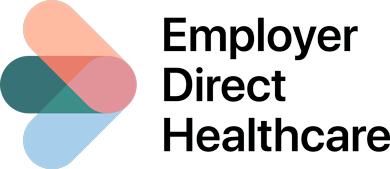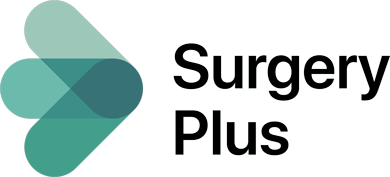If you’ve been following healthcare news lately, you may have noticed a few trends in cancer care:
- More young people are getting cancer—and researchers aren’t sure why.
- While outcomes have improved for some populations, they remain stubbornly poor in others. For example, Black women die of breast cancer at a 40% higher rate compared with white women.
- New innovations in cancer care are changing faster than even doctors can keep up with.
- Prices for new cancer drugs increased by 53% over five years.
- Cancer is now the top cost driver for employers.
All these factors have put cancer in the spotlight for employers.
To help guide employees to the best care, employers are looking to Centers of Excellence programs for cancer, with 53% offering this approach in 2024. Making sure employees can receive care at the best facilities is important—but isn’t the only piece.
Nicki MacManus, General Manager, Cancer Care Direct, and Harlan Levine, MD, President, Health Innovation and Policy, at City of Hope, shared their recommendations for how employers can keep up with this changing landscape and support employees during what can be the most challenging time in their lives.
Strategies for improving care
Engage employees in your cancer program as early as possible. “The best chance of a cure is your first chance—the wrong diagnosis or the wrong treatment plan can be devastating,” said Dr. Levine.
A cancer navigation program should reach employees as close to their diagnosis as possible to make an impact, but like any benefits program, employee awareness can be a challenge. One first step is to make sure benefits teams are trained on how your cancer program can support employees. Because a cancer diagnosis is so life changing, we’ve found that employees often tell their HR leader about their diagnosis. This is one of the most common ways members hear about Cancer Care Direct.
Implement an early detection program. Early detection—another high priority for employers tackling cancer—is another powerful way to reach employees as soon as they receive a diagnosis. But screening can be challenging to access; even with great insurance, 62% of women refuse an annual mammogram. Consider bringing in a program that makes cancer screening more comfortable and convenient for your employees. And if you have a cancer screening program in place, see if your vendor will integrate with your COE program so newly diagnosed employees can get on the right care path as soon as possible.
Provide access to care navigation from the start so you know treatment plans are following the latest guidelines. Cancer care is complex. For a woman diagnosed with breast cancer, for example, from initial concern through first treatment, there are at least 30 touchpoints, said Levine. And cancer is the most rapidly advancing area of medicine, making it difficult even for oncologists to stay up to date on the latest treatment guidelines. While this volume of change is amazing for medical advancement, it creates significant variation in expertise across cancer types. And getting the right diagnosis and treatment plan in the beginning is crucial.
Cancer Care Direct includes expert reviews of treatment plans to validate diagnoses as early in their journey as possible and ensure their plans follow the latest published guidelines according to National Comprehensive Cancer Network (NCCN) guidelines.
Care navigation can also address some inequities in cancer care access by ensuring all employees have the same access to the best specialists for their cancer. For example, studies show significant racial and insurance-related disparities in testing rates, making biomarker testing one way employers can help improve cancer treatment equity.
Help employees get a second opinion early. 84% of people who have received a cancer diagnosis don’t seek a second opinion but receiving one can save lives. One challenge is that patients may feel uncomfortable “questioning” their oncologist by seeking a second opinion. Through a peer-to-peer service, oncologists can connect with each other, rather than requiring the patient to facilitate.
“We heard from lots of cancer patients that they were scared to get a second opinion for fear of insulting their oncologist,” said MacManus. “Our integration with Access Hope provides a peer-to-peer service, and 88% of the time, the diagnosing physicians take their advice.”
Reducing cost without sacrificing care quality
Of course, saving money on cancer care should never come at the cost of quality. But as employers look to manage their cancer spend, there are areas that don’t decrease care quality—or even improve it—that can also meaningfully reduce costs.
Optimize site of care when possible. The annual price of a newly launched cancer drug in the United States averaged $283,000 in 2021, a 53% increase from 2017. Drug infusions for cancer are typically done at a hospital, but don’t have to be. Infusions done at home or at a local cancer community center can both create a more convenient patient experience and significantly reduce costs.
Managing side effects and reducing ER visits can reduce costs. It’s common for cancer drugs to have fifteen to 20 side effects. Oncology nurses can help provide education and help members manage their medications to reduce side effects that can lead to ER visits, like dehydration and nausea. Over half of cancer patients end up in the ER. Reducing these episodes creates a better care experience for patients and reduces the total cost of care by avoiding unnecessary complications.
Unique considerations for cancer
Bundled care is sometimes seen as a panacea for controlling healthcare costs. But for cancer, there are few reasons bundled care may not be as impactful on cost savings:
- Cancer is longitudinal, not episodic. Treatment may last months or even years. Bundles make more economic sense for care that’s focused on episodic care, such as surgery.
- Bundles may cover less-complex cancer cases. Ideally, your solution will provide support for all types and stages of cancer. Cancer bundles generally focus on less-complex cases.
- Not all care needs to be delivered in a hospital setting. Bundles frequently require prolonged treatment delivery at a specific site, so taking this approach may reduce your ability to optimize for site of care.
The EDH approach to cancer care management
Cancer Care Direct, our oncology solution, helps members get on the right treatment path as soon as possible and provides guidance and advocacy through each step.
- Care for everyone: 100% of cancer patients are eligible for support—we cover all cancer types, including pediatric cancer.
- Guided support. Oncology nurses review treatment plans (in collaboration with our Chief Medical Officer and Advisory Board), connect members with second opinions, provide education, and act as advocates. Members work with the same nurse throughout their treatment.
- National and local care: Members can receive care at national comprehensive cancer centers and at community care centers, depending on appropriateness of care.
- Meaningful cost reduction: At EDH, we reduce cancer costs through higher quality care and reduced waste, such as optimizing site of care and reducing ER visits through virtual, expert support.
Ready to learn more about how Cancer Care Direct can support your employees navigating a cancer diagnosis? Get in touch with us.



